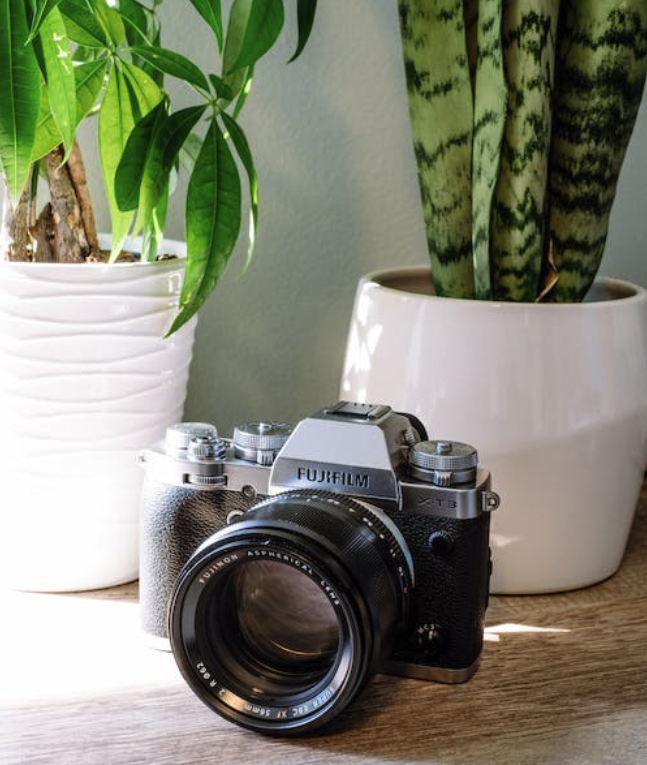The Fujifilm X-T3 and X-T30 are two of the most popular mirrorless cameras on the market. Both models offer great features and image quality, but there are some key differences that may make one camera more appealing to you than the other.
In this article, we’ll take a closer look at the Fujifilm X-T30 vs X-T3 vs X-T30 II and explore the main differences between these three cameras.
Table of Contents
Fujifilm X-T3
The Fujifilm X-T3 is the flagship model in the company’s X-series of mirrorless cameras. It offers a 26.1 megapixel APS-C sensor, 4K video recording, advanced autofocus system with 2,016 phase detection points, and a weather-sealed body.
Fujifilm X-T30
The Fujifilm X-T30 is a more budget-friendly option that still offers excellent features and image quality. It has a 26.1 megapixel APS-C sensor, 4K video recording, advanced autofocus system with 425 phase detection points, and a lightweight and compact body.
Fujifilm X-T30 II
The Fujifilm X-T30 II is the latest model in the X-T series and it builds on the success of the X-T30. It offers a 26.1 megapixel APS-C sensor, 4K video recording, advanced autofocus system with 2,016 phase detection points, and a weather-sealed body.
We’ll look at each a bit more closely below.
Fujifilm X-T30 vs X-T3 vs X-T30 II
Price
Price is always the first consideration for many to make sure it can cleanly fit in their budget.
The Fujifilm X-T3 has a manufacturer’s suggested retail price (MSRP) of $1,499.95 USD. The Fujifilm X-T30 has an MSRP of $999.95 USD, while the Fujifilm X-T30 II has an MSRP of $1,299.95 USD.
Prices do change, so we encourage you to check for current prices and availability.
Fujifilm X-T30
Fujifilm X-T3
Fujifilm X-T30 II
Sensor
All three cameras use the same 26.1 megapixel APS-C sized CMOS sensor with backside illuminated (BSI) technology. This sensor offers excellent image quality with low noise levels and great dynamic range.
Video Recording and Quality
The Fujifilm X-T3 and X-T30 II both offer 4K video recording at up to 30p, while the X-T30 is limited to 1080p recording. All three cameras offer 4:2:2 10-bit color output via HDMI, but only the X-T3 and X-T30 II can record 4K video internally to a memory card.
The X-T3 and X-T30 II also offer 4K video recording at up to 60p when using an external recorder.
The X-T3 offers the best video quality of the three cameras with its ability to record 4K video at up to 60p with 10-bit color. The X-T30 can only record 1080p video at up to 60p with 8-bit color. The X-T30 II falls in between the X-T3 and X-T30 with its ability to record 4K video at up to 30p with 10-bit color.
Autofocus System
The Fujifilm X-T3 and X-T30 II both feature an advanced autofocus system with 2,016 phase detection points. This autofocus system is fast, accurate, and offers excellent tracking performance. The X-T30 uses a more basic autofocus system with 425 phase detection points. This autofocus system is still quite good, but it doesn’t offer the same performance as the X-T3 and X-T30 II.
Build Quality and Weather Sealing
The Fujifilm X-T3 and X-T30 II both have a magnesium alloy body with weather sealing. This makes them resistant to dust and moisture, and able to withstand tough weather conditions. The X-T30 does not have weather sealing and is not as resistant to the elements.
LCD Screen and Electronic Viewfinder
The Fujifilm X-T3, X-T30, and X-T30 II all have a 3.0″ LCD touchscreen display with 1.04 million dots. This is a great LCD screen that is easy to use and offers excellent image playback and menu navigation.
All three cameras also have an electronic viewfinder (EVF) with 2.36 million dots. The EVF on the X-T3 is the largest and brightest of the three, making it the best option for those who shoot in bright conditions or prefer to use the EVF most of the time.
Continuous Shooting Speed
The Fujifilm X-T3 has the fastest continuous shooting speed of the three cameras with a top speed of 11 fps.
The X-T30 is limited to 8 fps, while the X-T30 II can shoot at up to 10 fps.
Memory Card Slots
The Fujifilm X-T3 and X-T30 II both have dual memory card slots, while the X-T30 only has a single slot. The dual memory card slots on the X-T3 and X-T30 II allow for more flexibility and convenience when shooting.
Image Quality
All three cameras offer excellent image quality with low noise levels and great dynamic range. The X-T3 and X-T30 II both offer slightly better image quality than the X-T30, but the difference is quite small.
Battery Life
The Fujifilm X-T3 has the best battery life of the three cameras with a rated life of 390 shots per charge. The X-T30 is rated for 350 shots per charge, while the X-T30 II is rated for 340 shots per charge.
Other Features
The Fujifilm X-T3 and X-T30 II both have built-in Wi-Fi and Bluetooth, while the X-T30 does not. This allows for easy transferring of images and videos to a smartphone or tablet.
The Fujifilm X-T3 also has an intervalometer for taking time lapse videos, while the X-T30 and X-T30 II do not.
FAQs – Fujifilm X-T30 vs X-T3 vs X-T30 II
What are the main differences between the Fujifilm X-T3 and X-T30?
The main differences between the Fujifilm X-T3 and X-T30 are the image sensor, autofocus system, continuous shooting speed, memory card slots, battery life, and additional features.
The X-T3 has a higher resolution image sensor, a more advanced autofocus system, a faster continuous shooting speed, dual memory card slots, better battery life, and built-in Wi-Fi and Bluetooth.
The X-T30 also has an intervalometer for taking time lapse videos.
What are the main differences between the Fujifilm X-T30 II and X-T30?
The main differences between the Fujifilm X-T30 II and X-T30 are the image sensor, autofocus system, continuous shooting speed, memory card slots, battery life, and additional features.
The X-T30 II has a higher resolution image sensor, a more advanced autofocus system, a faster continuous shooting speed, dual memory card slots, better battery life, and built-in Wi-Fi and Bluetooth.
The X-T30 also has an intervalometer for taking time lapse videos.
Fujifilm X-T30 vs X-T30ii: What’s the Difference?
Do the Fujifilm X-T3 and X-T30 have weather sealing?
Yes, both the Fujifilm X-T3 and X-T30 have weather sealing. This makes them resistant to dust and moisture, and able to withstand tough weather conditions. The X-T30 does not have weather sealing and is not as resistant to the elements.
How many memory card slots does the Fujifilm X-T3 have?
The Fujifilm X-T3 has two memory card slots. This allows for more flexibility and convenience when shooting.
What is the battery life of the Fujifilm X-T3?
The Fujifilm X-T3 has a rated battery life of 390 shots per charge. This is the best battery life of the three cameras.
The X-T30 is rated for 350 shots per charge, while the X-T30 II is rated for 340 shots per charge.
Does the Fujifilm X-T3 have built-in Wi-Fi and Bluetooth?
Yes, the Fujifilm X-T3 has built-in Wi-Fi and Bluetooth. This allows for easy transferring of images and videos to a smartphone or tablet.
The X-T30 and X-T30 II also have built-in Wi-Fi and Bluetooth.
What are the dimensions of the Fujifilm X-T3?
The Fujifilm X-T3 has dimensions of 132.5 x 92.8 x 58.8 mm (5.21 x 3.66 x 2.32 in).
What is the sensor size of the Fujifilm X-T3?
The Fujifilm X-T3 has a sensor size of APS-C (23.6 x 15.6 mm). This is the same sensor size as the X-T30 and X-T30 II.
What is the weight of the Fujifilm X-T3?
The Fujifilm X-T3 weighs 539 g (1.19 lb / 19.01 oz). This is slightly heavier than the X-T30, which weighs 457 g (1.01 lb / 16.19 oz), and the X-T30 II, which weighs 495 g (1.09 lb / 17.46 oz).
Conclusion – Fujifilm X-T30 vs X-T3 vs X-T30 II
The Fujifilm X-T3 is the best camera of the three, offering the highest image quality, best video quality, and most advanced autofocus system. It’s also the most expensive camera of the three.
The Fujifilm X-T30 is a great budget-friendly option that still offers excellent features and image quality. It’s a good choice for those who don’t need the very best performance or 4K video.
The Fujifilm X-T30 II is the newest camera of the three and offers slightly better performance than the X-T30. It’s a good choice for those who want the best image quality and autofocus system, but don’t need 4K video.
Related
- Best Mirrorless Cameras
- What Are Mirrorless Cameras?
- What Are DSLR Cameras?
- Canon R5 vs. R6
- Canon vs. Sony Mirrorless
- Fujifilm X100F vs. X100V





